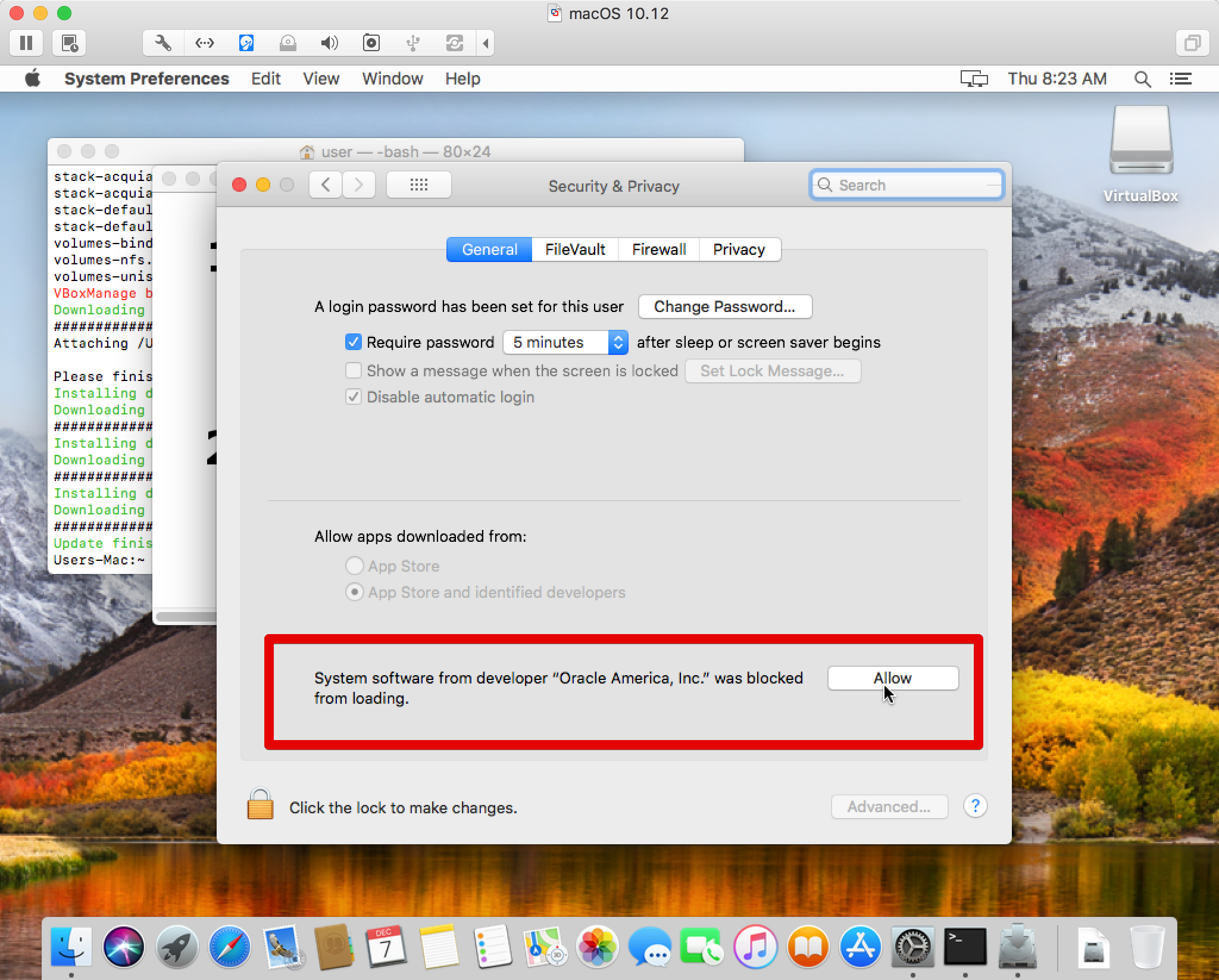Installing Docksal
System requirements
Minimum RAM requirement: 4GB. 8GB or more recommended.
Mac
- Must be a 2010 or newer model
- macOS 10.11 or newer
Linux
- CPU with SSE4.2 instruction set supported (most models released in the last 10 years)
- Supported distributions: Debian with derivatives (Ubuntu, Mint, etc.), Fedora with derivatives (CentOS etc.)
If you get output from the following command, then your CPU is good to go:
cat /proc/cpuinfo | grep sse4_2
Linux distros outside of the Debian and Fedora family may still work (e.g., Alpine). You will have to install Docker manually, then install Docksal as usual on Linux.
Windows
- CPU with hardware virtualization (VT-x/AMD-V) supported and enabled in BIOS.
- Windows 7 or newer
Installation
Choose Operating System
Click your operating system to proceed to OS-tailored docs:
macOS Docker installation options
Click the preferred option to proceed to option-specific docs.
- VirtualBox
- Faster, somewhat less convenient.
- Docker for Mac
- Somewhat slower, but easier to use and update
macOS with VirtualBox
With this method, Docker will run inside a VM in VirtualBox.
Download and Install VirtualBox
Enable Kernel extension (Why?)
Go to
System Preferences > Security & Privacy.
If you do not see the Allow button it means the extension is already enabled.
Open Terminal app and run
curl -fsSL get.docksal.io | bashStart the VM
In Terminal app run:
fin vm start
macOS with Docker for Mac
Download and Install Docker for Mac
Start Docker for Mac
Wait until it says “Docker is running” in the menubar icon menu.
Open Terminal app and run
curl -fsSL get.docksal.io | DOCKER_NATIVE=1 bash
Linux installation options
Click your repo to proceed to docs.
Linux. Debian, Ubuntu, Fedora
Debian with all derivatives (Ubuntu, Raspbian etc.), Ubuntu with derivatives (Mint, etc.), and Fedora with derivatives are supported out of the box with automatic installation.
Check pre-requisites
By default, Apache listens on
0.0.0.0:80and0.0.0.0:443. This will prevent Docksal reverse proxy from running properly. You can resolve it an any of the following ways:- Reconfigure Apache to listen on different host (e.g.,
127.0.0.1:80and127.0.0.1:443) - Reconfigure Apache to listen on different ports (e.g.,
8080and4433) - Stop and disable Apache
- Reconfigure Apache to listen on different host (e.g.,
Check your software.
Check that you have installed and configured
- curl
- sudo
Open Terminal and run
curl -fsSL get.docksal.io | bash
Linux. Other distributions
Compatibility
If you cannot find your distribution in the list above, it does not mean it is not supported! Lesser known Debian, Ubuntu, or Fedora derivatives are most likely supported.
This happens because Docker on Linux is being installed using the official get.docker.com script. If your distribution is not in the list above, but get.docker.com supports it, then it is supported too and you can follow the steps for compatible distributions.
Incompatible distributions
In case your distribution in not compatible with get.docker.com, you will need to install latest stable Docker for your distribution first, and then follow the steps for compatible distributions.
Windows. Linux Shell installation options
Docksal on Windows requires Linux type shell to run. Choose the options you like.
- Babun
- Faster install, but CYGWIN is less native.
- Ubuntu Application (WSL)
- Beta. Harder to install, can ony use Docker for Mac, but native Linux shell, real Ubuntu on Windows.
Windows with Babun. Docker installation options
Using Babun as Linux type shell supports 2 options of Docker installation.
- VirtualBox
- Faster, somewhat less convenient to use and update.
- Docker for Windows
- Somewhat slower, excludes VirtualBox, but easier to use and update
Windows with Babun and VirtualBox
Download and Install Babun
Install Docksal (VirtualBox will be installed automatically if necessary)
Open Babun and run:
curl -fsSL get.docksal.io | bashStart the VM
In Babun run:
fin vm start
Windows with Babun and Docker for Windows
Download and Install Babun
Download and Install Docker for Windows
Notes: computer will require logout and restart during the installation. See screen recording to know what to expect.
Configure Docker for Windows
Share your local drives with Docker for Windows:

Install Docksal
Open Babun and run:
curl -fsSL get.docksal.io | bash
Windows with Ubuntu App (WSL) and Docker for Windows
Warning: this way of using Docksal is not thoroughly tested. It has been proven to work, but quirks may happen.
Ubuntu application is previously known as Windows Subsystem for Linux (WSL)
Install Ubuntu App
Install and configure Docker for Windows
Install Docksal
Updating Docksal
All Docksal components can be updated with a single command:
fin update
Uninstallation
If you used VirtualBox
The steps below will remove the Docksal VM and cleanup all Docksal stuff.
fin system stop
fin vm remove
rm -rf "$HOME/.docksal"
rm -f /usr/local/bin/fin
Optionally remove VirtualBox application.
If you used Docker for Mac / Docker for Windows
The steps below will remove Docksal project containers (files untouched) and stop Docksal system services.
fin cleanup
fin system stop
rm -rf "$HOME/.docksal"
rm -f /usr/local/bin/fin
Optionally remove Docker for Mac / Docker for Windows application.
If you used Linux
The steps below will remove Docksal project containers (files untouched) and stop Docksal system services.
fin cleanup
fin system stop
rm -rf "$HOME/.docksal"
rm -f /usr/local/bin/fin
Optionally follow Docker uninstallation instructions for Ubuntu, Debian, Fedora, CentOS.




